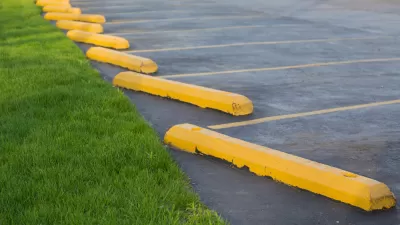A post on Vox collects a series of maps from the "Atlas of the Historical Geography of the United States" showing how travel times changed over the past 200 years of U.S. history.
Phil Edwards offers some perspective on how far we've come in the past 200 years—or, put another way, how far we've come on how far we can go. For instance, "[back] in the early 1800s, without easily navigable roads or railroads, even a journey from New York to Washington, DC, was a multi-day affair."
Edwards shares a series of maps from the Atlas of the Historical Geography of the United States showing rates of travel at the moment of several technological and infrastructure breakthroughs, such as the construction of the National Road between 1811 and the 1830s and the Transcontinental Railroad in 1869.
One distinction to keep in mind, according to Edwards, is that the maps don't show a steady pace of progress, although change seems to have occurred quickly when looking back over the maps. "[The maps] also show how that progress advanced unevenly, in fits and starts. Railroads didn't reduce travel times right away — they still required significant infrastructure investments, ranging from laying down tracks to building tunnels. That took decades."
FULL STORY: Travel time is the forgotten breakthrough of the past 200 years

Alabama: Trump Terminates Settlements for Black Communities Harmed By Raw Sewage
Trump deemed the landmark civil rights agreement “illegal DEI and environmental justice policy.”

Study: Maui’s Plan to Convert Vacation Rentals to Long-Term Housing Could Cause Nearly $1 Billion Economic Loss
The plan would reduce visitor accommodation by 25% resulting in 1,900 jobs lost.

Planetizen Federal Action Tracker
A weekly monitor of how Trump’s orders and actions are impacting planners and planning in America.

Wind Energy on the Rise Despite Federal Policy Reversal
The Trump administration is revoking federal support for renewable energy, but demand for new projects continues unabated.

Passengers Flock to Caltrain After Electrification
The new electric trains are running faster and more reliably, leading to strong ridership growth on the Bay Area rail system.

Texas Churches Rally Behind ‘Yes in God’s Back Yard’ Legislation
Religious leaders want the state to reduce zoning regulations to streamline leasing church-owned land to housing developers.
Urban Design for Planners 1: Software Tools
This six-course series explores essential urban design concepts using open source software and equips planners with the tools they need to participate fully in the urban design process.
Planning for Universal Design
Learn the tools for implementing Universal Design in planning regulations.
Caltrans
Smith Gee Studio
Institute for Housing and Urban Development Studies (IHS)
City of Grandview
Harvard GSD Executive Education
Toledo-Lucas County Plan Commissions
Salt Lake City
NYU Wagner Graduate School of Public Service




























